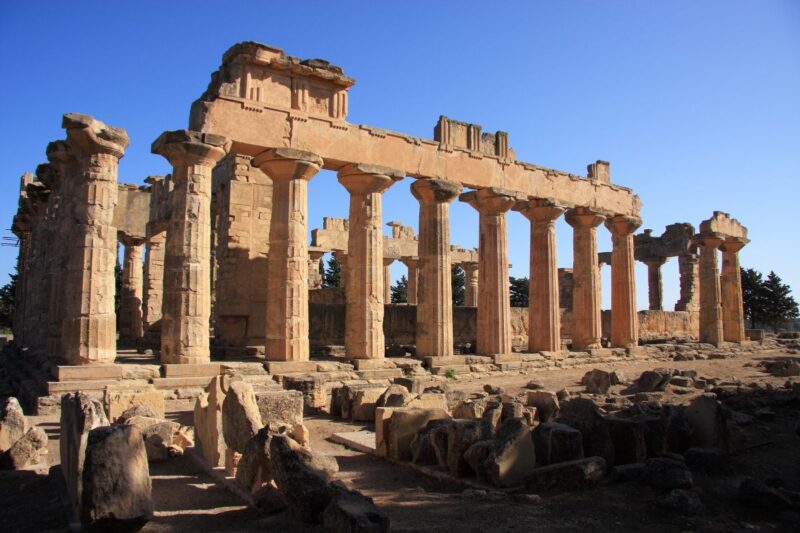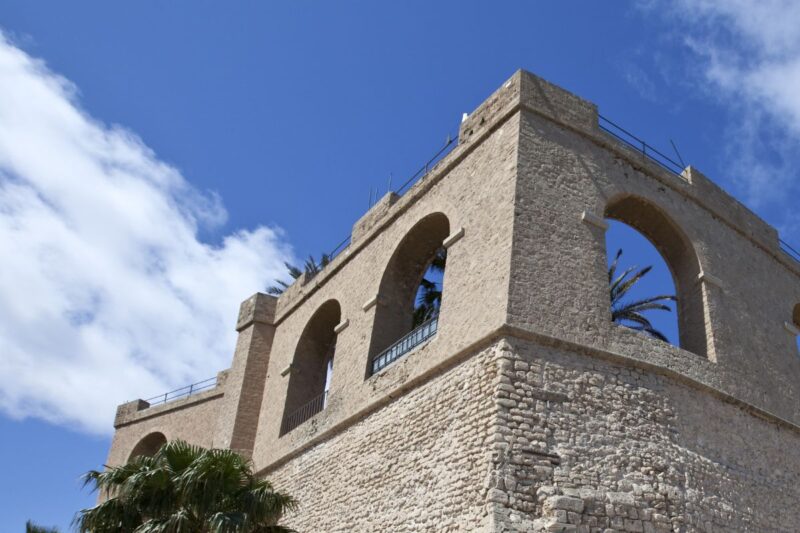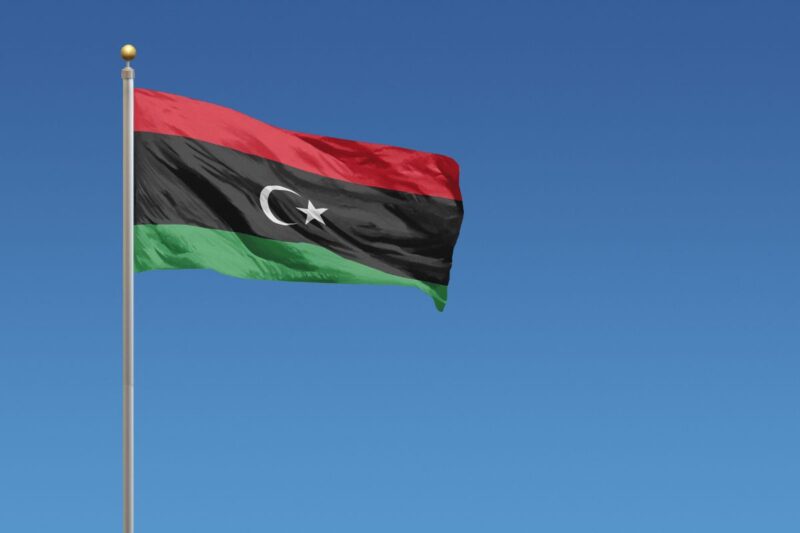Libya is a country full of history, culture, and natural beauty. From ancient ruins to stunning landscapes, there are many things to explore. And learning how to become a digital nomad like me will give you the chance to do so!
From Morocco to Djibouti, exploring North Africa is amazing! So let me present it… Here are 10 must-do activities when you visit Libya:

1. Visit the Ruins of Leptis Magna
One of the best things to do in Libya is to visit the ancient city of Leptis Magna.
This city was built during the Roman Empire and is one of the most well-preserved Roman ruins in the world.
You can see the amazing arch of Septimius Severus, who was born in Libya. Nearby, you might also find mosaics that tell the stories of the city’s rich past.
2. Explore the Sahara Desert
Libya is home to vast sand dunes in the Sahara Desert. You can explore these dunes on a camel ride or by driving through them in a 4×4 vehicle.
The Acacus Mountains, located in the desert, are known for their rock art, which dates back thousands of years.
The nearby town of Ghadames, often called the “Jewel of the Sahara,” is also UNESCO World Heritage Site worth visiting.
3. Relax by the Mediterranean Sea
Libya’s coastline along the Mediterranean Sea is beautiful and peaceful. You can swim, relax on the beach, or explore the small coastal towns.
The sea has been important to Libya since the time of the Ottoman Empire because it served as a major trade route.
This coastline has been a vital part of trade routes since the time of the Phoenicians. Don’t miss the chance to taste local dishes flavored with fresh spices while enjoying views of the sea.
4. Discover the History of Tripoli
In the capital city of Tripoli, you can visit the Great Mosque and learn about Libya’s history.
The city was influenced by many different cultures. Tripoli has modern cafés, shops, and markets where people gather to socialize, buy daily needed things and enjoy daily life in the city.
Visitors also explore landmarks like the Red Castle Museum and the Arch of Marcus Aurelius, which showcase Libya’s rich history and culture.
5. Hike the Nafusa Mountains
The Nafusa Mountains are a great place to hike and explore Libya’s natural beauty.
These mountains offer stunning views of the landscape. People tend to enjoy outdoor activities like hiking and exploring the natural beauty of the region.
Traditional Berber villages are scattered throughout the area, where visitors can learn about local customs and culture. Some travelers come to see the unique ancient cave homes built into the mountain rock.
If you’re planning to hike, don’t forget to carry your passport and some cash, as ATMs may not always be available.

6. Visit the Ancient City of Cyrene
In Eastern Libya, you can visit Cyrene, another ancient civilization that was part of the Roman world.
This city has many well-preserved ruins, including the Temple of Apollo, Temple of Zeus, and a well-preserved Roman theater.
Today, it’s a UNESCO World Heritage Site and a key destination for history lovers. The city’s architecture reflects a mix of Roman and Greek influences.
7. Learn About Libya’s Modern History
Libya has a complex modern history, from King Idris to Colonel Gaddafi.
The country went through major changes during the Libyan Civil War and continues to face challenges with armed groups. They also experienced some during the Arab Spring.
You can learn more about this at local museums or by visiting significant sites in cities like Benghazi.
8. Explore the Great Man-Made River Project
This project is one of Libya’s most impressive modern achievements. This massive engineering project brings water from underground aquifers deep in the Sahara to cities across the country.
It’s considered one of the largest irrigation projects in the world and plays a vital role in providing water to people and farms in Libya.
While you may not be able to visit the underground parts of the system, learning about this project gives you insight into how Libya manages its resources.
9. Pay with the Libyan Dinar
When shopping for a water bottle or eating out with friends, you’ll need to use the Libyan dinar, the country’s official currency.
Credit cards may not be widely accepted, so it’s a good idea to carry cash.
Keep in mind that Libya has its own set of rules for visitors, so make sure you have a tourist visa before you go.
10. Reflect on Libya’s Challenges
Libya has faced many challenges in recent years, including the effects of the climate crisis and natural disasters like Storm Daniel.
The United Nations has been involved in helping the country recover.
Learning about these issues will help you better understand Libya today. And exploring is the most exciting way to do so – without the need of internet connection!
While in Libya, consider visiting nearby regions like Chad, Sudan, or Niger for a broader view of North Africa.

Libya offers so much to discover. Whether you’re hiking the Nafusa Mountains or visiting the ruins of Leptis Magna, there’s something for every traveler.
If you’re fascinated by history, don’t miss the chance to explore the amphitheatre and temples in cities like Sabratha and Cyrene.
Just remember, as a tourist, never share my personal information with strangers, and always follow local laws during your trip to this incredible country.
Now let’s put our travel insurance to good use – come visit Libya with me!
FAQ
In 1934, Italy combined Cyrenaica, Tripolitania and Fezzan and adopted the name “Libya” (used by the Ancient Greeks for all of North Africa except Egypt) for the unified colony, with Tripoli as its capital.
Official name: Great Socialist People’s Libyan Arab Jamahiriya. Type: “Jamahiriya” is a term Col. Mu’ammar al-Qadhafi coined and which he defines as a “state of the masses” governed by the populace through local councils. In practice, Libya is an authoritarian state.
Wild animals include desert rodents, such as the desert hare and the jerboa; hyenas; foxes, such as the fennec and the red fox; jackals; skunks; gazelles; and wildcats. The poisonous adder and krait are among the reptiles that inhabit the scattered oases and water holes.


